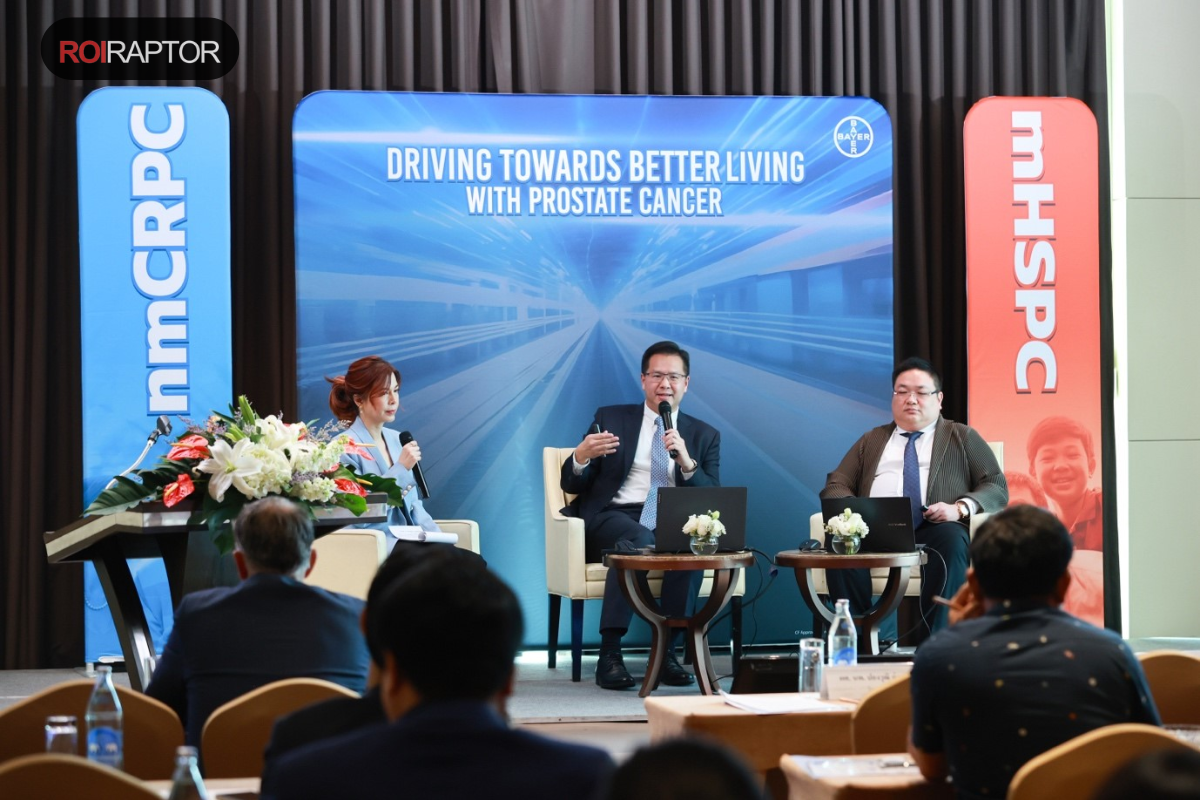Ignoring early symptoms of prostate cancer can have serious consequences. It remains a major health concern among men, yet early detection and timely treatment improve survival and quality of life.
Prostate cancer ranks among the most common cancers in men. In Thailand, it is the fourth most prevalent, while globally, it is the second most diagnosed. Symptoms include abnormal urination, blood in the urine, and severe pain in the lower back, pelvis, or thighs. Family history also increases the risk. Regular screenings are advised for men aged 50 and older. Advances in novel hormonal therapies (NHT) offer effective treatment with fewer side effects.
The World Health Organization (WHO) reported that in 2022, prostate cancer caused approximately 3,829 deaths annually in Thailand, with 7,830 new cases each year. Globally, there were about 397,430 deaths and 1,467,854 new cases. These numbers underscore the importance of awareness and early action.
To address this issue, Bayer Thai Co., Ltd. organized a seminar, “Driving Towards Better Living with Prostate Cancer.” Experts, including Assist. Prof. Pongwut Danchaivijitr from Siriraj Hospital and Prof. Dr. Kittinut Kijvikai from Ramathibodi Hospital, discussed the prostate gland’s function, warning signs, and new screening and treatment options.
Understanding the Prostate Gland
Assist. Prof. Pongwut describes the prostate as a small, chestnut-sized gland located under the bladder and in front of the rectum. It produces fluid essential for semen. The male sex hormone supports its growth, but when prostate cells divide uncontrollably, they form tumors.
Prostate Cancer Risk Factors
Age and genetics play key roles in prostate cancer risk. Men with a family history of the disease face higher chances. Certain ethnic groups, particularly European and American men, have higher incidences compared to Asians. Obesity, lifestyle choices, and high levels of male hormones, including unnecessary supplementation, also contribute to the risk.
Prostate cancer develops in four stages. The first stage is usually symptomless, with cancer confined to the prostate. In the second stage, cells grow but remain within the prostate. The third stage sees cancer spreading to outer prostate layers, while the fourth involves metastasis to other organs through the bloodstream or lymphatic system. Some cases are only diagnosed at the metastatic stage, making treatment more complex.
Recognizing Symptoms and Seeking Medical Help
Prof. Kittinut highlights key warning signs:
- Difficulty urinating, blood in urine
- Persistent lower back, pelvic, or thigh pain
- Fatigue, body aches, numbness, weight loss, nausea (in advanced stages)
Symptoms may resemble those of benign prostatic hyperplasia (BPH) or other bladder issues, making early screening essential. Initial tests include a digital rectal exam (DRE) and a prostate-specific antigen (PSA) blood test. Normal PSA levels should be under 4 ng/mL. If they exceed 10 ng/mL, further imaging or a biopsy is recommended.
“Early-stage patients may have small tumors without noticeable symptoms,” says Prof. Kittinut. “As cancer progresses, tumors grow and spread through the bloodstream and lymphatic system. Early detection allows for curative treatment, while late-stage diagnoses often require long-term management to improve life expectancy and comfort.”
Treatment Options
Treatment depends on the stage and individual patient needs. Early-stage cases focus on local therapies and monitoring. Radiation therapy and robotic-assisted prostate surgery are common options. If cancer spreads, medications play a vital role in managing its progression.
“For early-stage surgical patients, PSA levels are monitored post-surgery,” says Prof. Kittinut. “If levels remain normal, the surgery was likely successful. If PSA stays elevated, additional radiation or systemic treatments may be needed.”
Novel Hormonal Therapy (NHT) in Advanced Cases
Assist. Prof. Pongwut explains that testosterone fuels prostate cancer growth. Androgen deprivation therapy (ADT) is essential for advanced cases to prevent further spread. New oral hormonal therapies (NHT) offer greater effectiveness with fewer side effects, improving patient outcomes.
Intensified Treatment Approaches
Treatment intensification involves combining different therapies:
- ADT alone
- ADT with chemotherapy
- ADT with NHT
- ADT with both NHT and chemotherapy
Factors influencing treatment choices include:
- Disease stage and risk level
- Existing health conditions such as diabetes or heart disease
- Age and physical health
- A multidisciplinary team’s recommendations
Physicians tailor treatments to control the disease, limit metastasis, and maintain quality of life.
Treatment Side Effects
- ADT/NHT: Hot flashes, fatigue, muscle loss, increased osteoporosis risk
- Chemotherapy: Nausea, vomiting, hair loss, weakened immune system
- Radiation Therapy: Bladder and rectal irritation, skin sensitivity
- Surgery: Risks of infection, bleeding, and urinary incontinence
Despite these side effects, advancements in medicine have made treatments more tolerable, helping patients maintain a better quality of life.
Importance of Regular Screenings
Prof. Kittinut stresses that some men develop prostate cancer without clear risk factors. Annual health screenings starting at age 50 are crucial. Those with a family history should begin screening earlier, between 40-45 years old.
Assist. Prof. Paneeya Sutabutra, Country Medical Director of Bayer Thai Co., Ltd., highlights the company’s commitment to raising awareness and encouraging men over 50 to undergo screenings. Early detection allows for timely treatment and better management of the disease.
Prostate cancer is a serious but manageable condition. Early detection and advanced treatment options significantly improve survival and quality of life. Consulting specialists ensures the best approach for each patient.


